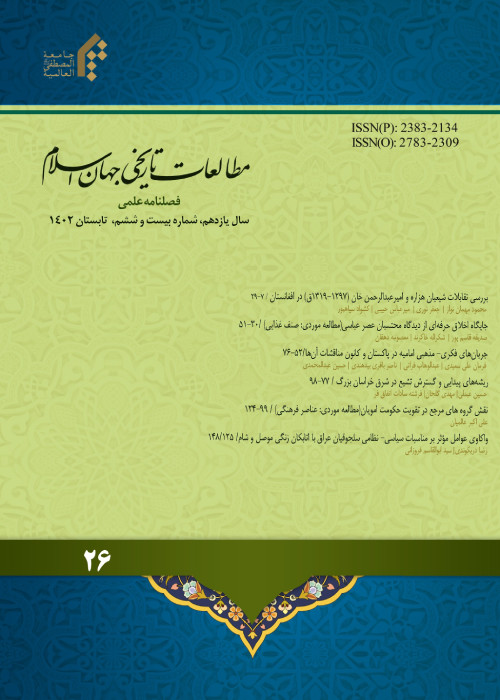Investigating the background of the formation of traditional institutional balance in the Safavid era Emphasizing the mutual relations between the clergy and the government
Author(s):
Article Type:
Research/Original Article (دارای رتبه معتبر)
Abstract:
In sociology, civic institutions are one of the most important sets of organizations and communities in society, which is located between the masses of citizens and the government, and as a result of the process of interaction between the government and independent social institutions are formed. . The Safavid government, based on the logic of the "Reactive sequences" model, by moving a chain of reactionary events, led to the formation of a special institutional heritage in Tabriz, the first Safavid capital, which finally came to fruition in Qazvin and Isfahan with political concentration. However, this centralism placed many ups and downs on the institutions, the study of which can help to better understand the traditional institutions in the Safavid era. Inspired by the theoretical model of historical institutionalism and historical research method and descriptive-analytical method based on first-hand sources and reliable sources, while considering the need to use sociological approaches in the analysis of historical phenomena is looking for a suitable answer to this question "According to the approach of historical institutionalism, to what extent has the Safavid government been able to achieve the formation of a relatively stable institutional balance between the clergy and the central government?" The results show that the formation of the traditional institutional balance of the Safavid period was based on a complex network of interrelationships between the two main institutions, namely the central government and the clergy, which resulted in a relatively stable institutional balance between these institutions. This institutional balance was not due to the domination of one institution over other institutions, but was the product of a balance of power based on the mutual needs of these institutions, which was rooted in the conditions and formation of the Safavid government based on a combination of socio-political forces and ideological power.
Keywords:
Language:
Persian
Published:
Bi Quarterly Journal of Historical Studies of Islamic World, Volume:9 Issue: 18, 2021
Pages:
7 to 36
magiran.com/p2339221
دانلود و مطالعه متن این مقاله با یکی از روشهای زیر امکان پذیر است:
اشتراک شخصی
با عضویت و پرداخت آنلاین حق اشتراک یکساله به مبلغ 1,390,000ريال میتوانید 70 عنوان مطلب دانلود کنید!
اشتراک سازمانی
به کتابخانه دانشگاه یا محل کار خود پیشنهاد کنید تا اشتراک سازمانی این پایگاه را برای دسترسی نامحدود همه کاربران به متن مطالب تهیه نمایند!
توجه!
- حق عضویت دریافتی صرف حمایت از نشریات عضو و نگهداری، تکمیل و توسعه مگیران میشود.
- پرداخت حق اشتراک و دانلود مقالات اجازه بازنشر آن در سایر رسانههای چاپی و دیجیتال را به کاربر نمیدهد.
In order to view content subscription is required
Personal subscription
Subscribe magiran.com for 70 € euros via PayPal and download 70 articles during a year.
Organization subscription
Please contact us to subscribe your university or library for unlimited access!



